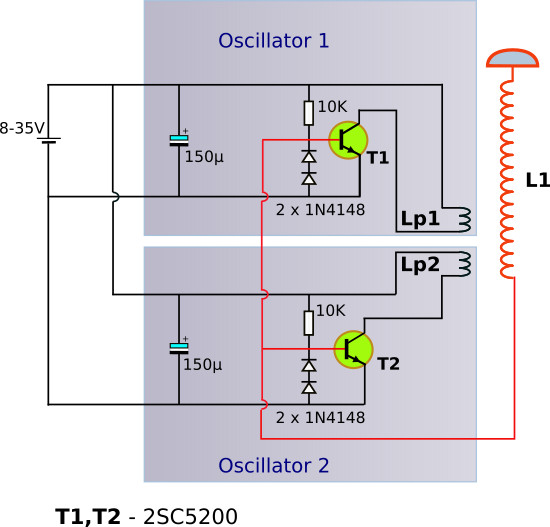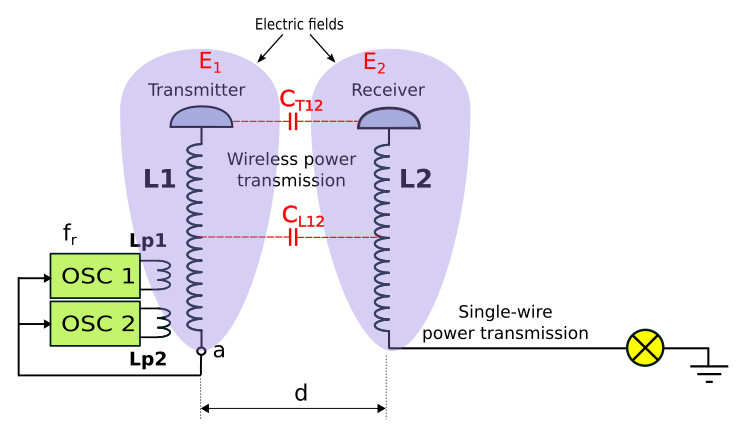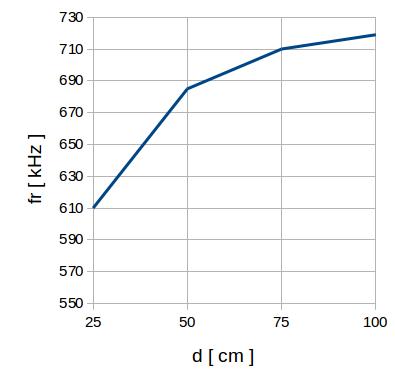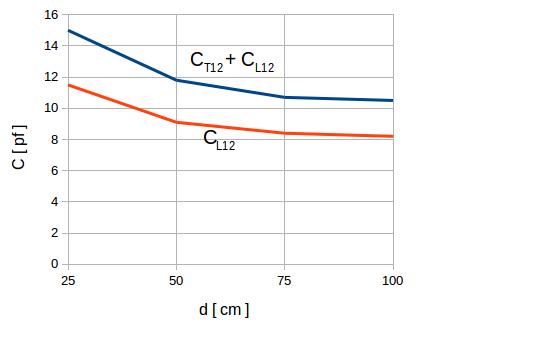For my experiments with wireless energy transfer, instead of the Tesla coil, I have used a similar circuit called the Slayer Exciter. This is a particularly good choice if a device with less power is required.
Similar to the Tesla coil, the Slayer Exciter generates a high-frequency high voltage. The Slayer Exciter was a brainstorm of Dr. Stiffler and Gbluer. It is very simple and inexpensive to produce.
To maximize the power, I used two Slayer Exciters (Double Slayer Exciter) and made slight modifications.
With this configuration, I achieved wireless and single-wire power transmission:
- 60W at a distance of 90cm
- 75W at a distance of 80cm
- 100W at a distance of 70cm
High Power Double Slayer Exciter

High Power Double Slayer Exciter
Basically, Slayer Exciter is very simple oscillator.
In the circuit are shown two Slayer Exciters (two oscillators). Transistor T1 of the first oscillator excites the primary coil Lp1. Transistor T2 of the second oscillator excites the primary coil Lp2. The primary coils (Lp1, Lp2) inductively excite the secondary coil L2.
The bases of transistors T1 and T2 are directly connected to one end of the secondary coil L1. As a result, the transistors operate automatically at the resonant frequency of the coil L1.
The primary coils (Lp1, Lp2) and the secondary coil L1 are wound in the same direction. They are wound parallel to each other on a PVC tube 3” (7.5cm) diameter. Each has 5 turns of 9AWG wire (2.9mm).
The secondary coil L1 has approximately 800 turns of 25 AWG (0.45mm) magnet wire on a PVC tube 2” (5cm) diameter.
To prevent greater heating of one of the transistors, transistors must have approximately the same characteristics.
Configuration for Wireless and Single-wire power transmission

Configuration for Wireless and Single-wire Power Transmission
The resonant frequency of the coil L2 will be a significant change, if you are changing the distance (d) between L1 and L2. The reason are primarily due to the mutual capacity between L1 and L2 (CT12 +CL12).
CT12 – mutual capacitance between top loads
CL12 – mutual capacitance between the coils L1 and L2 (without top load).
Changing the frequency of the oscillator due to changes in the distance (d) between the coils L1 and L2:

Changing the frequency of the oscillator as a function of distance coils L1 and L2
The device operates at a frequency around 600-700 kHz, depending on the distance (d).
Coupling between the two coils (L1 and L2) is primarily by electric field (Resonant Capacitive Coupling – electrostatic induction). In this case (Tesla coils) inductive coupling is negligible. Obviously, electric fields are far more effective than magnetic fields towards coupling energy between widely spaced resonant coils.
Additional measurement
Mutual capacitance between the coils L1 and L2:

mutual capacitance between the coils L1 and L2
The coils L1 and L2 have the same inductance – 4.7mH.
The phase shift between the voltage of the coil L1 and the voltage of the coil L2 is about 180°.

Electric field E1 around the coil L1 and electric field E2 around the coil L2 are opposite polarized and act against each other.
